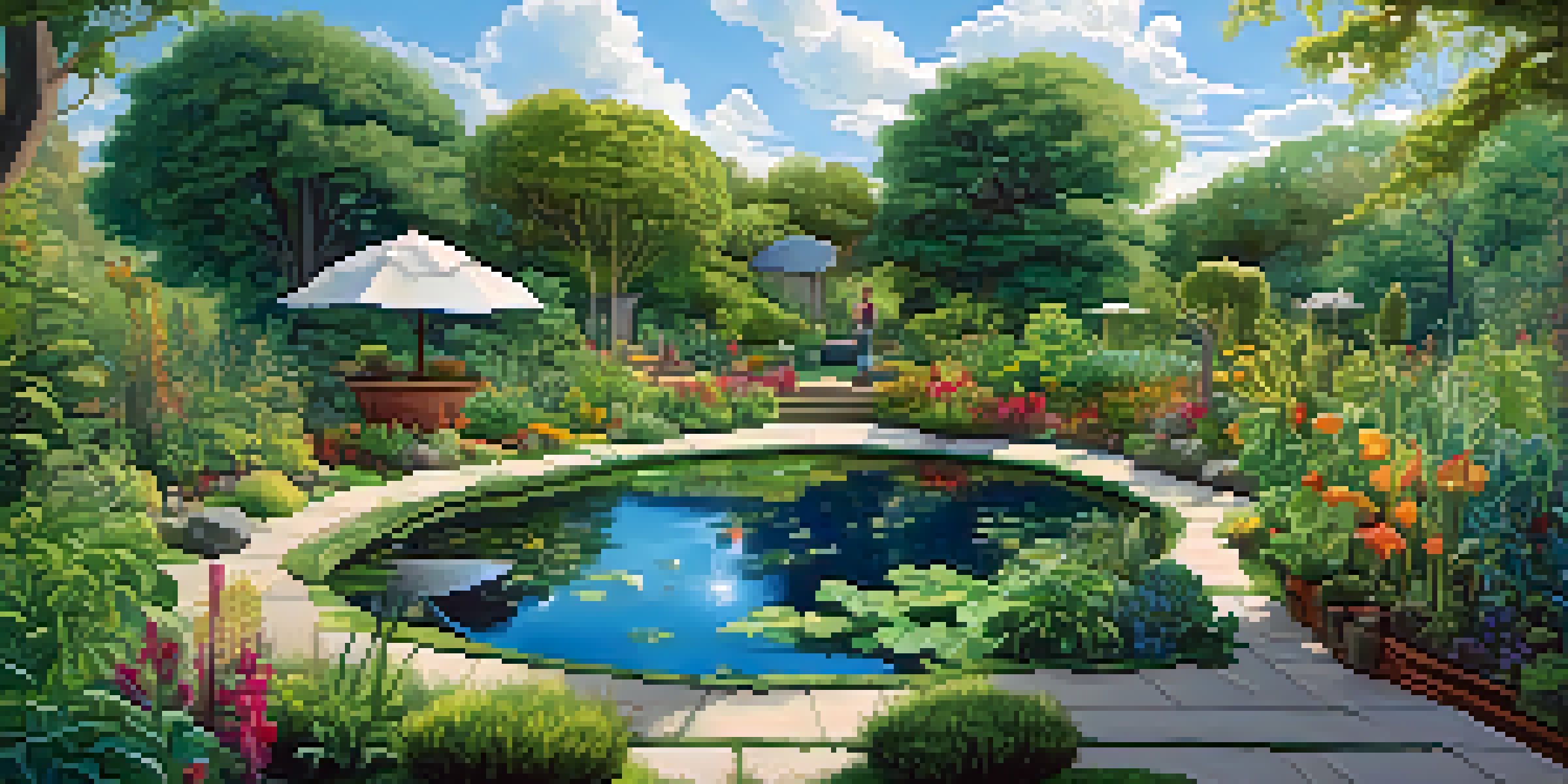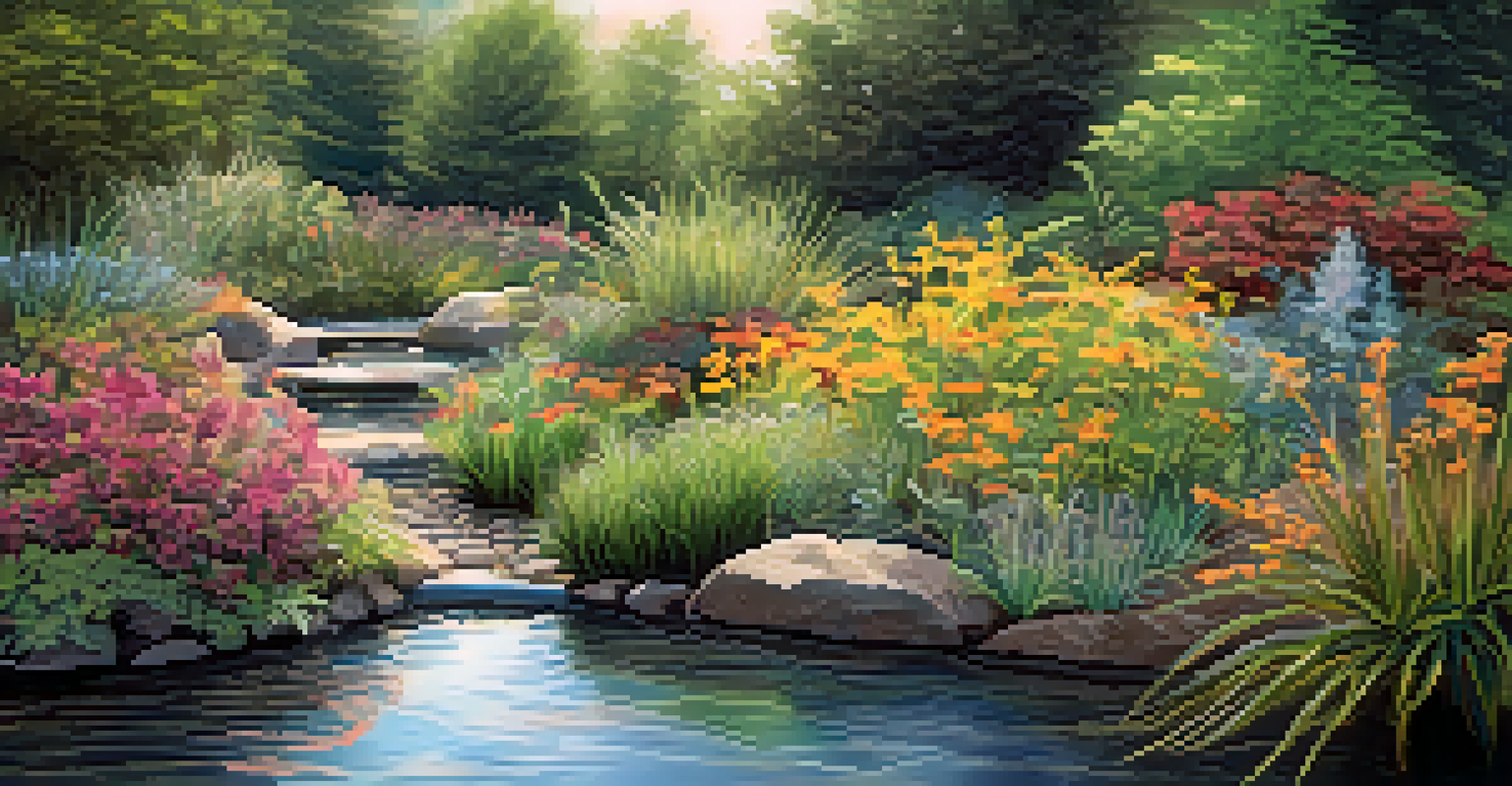Understanding Permaculture: Principles for Sustainable Living

What is Permaculture? An Introduction to Sustainable Design
Permaculture is a holistic approach to land management and design that mimics the natural ecosystems. It combines agriculture, architecture, and ecology, focusing on creating sustainable living environments. Imagine a garden that not only provides food but also nurtures the soil, conserves water, and supports wildlife—all while being easy to maintain.
The future will either be green or not at all.
The term 'permaculture' comes from 'permanent agriculture' and 'permanent culture,' reflecting its goal of sustainability. This method encourages practices that work in harmony with nature rather than against it. By understanding and applying permaculture principles, we can cultivate more resilient communities and ecosystems.
At its core, permaculture is about observing and interacting with the environment to create systems that are efficient and self-sustaining. Whether you have a small backyard or a large farm, permaculture principles can be adapted to suit any space, helping to foster a deeper connection with nature.
The Ethics of Permaculture: Care for the Earth, People, and Future
Central to permaculture are its ethical principles, which guide all practices within this framework. The first tenet is 'Care for the Earth,' which emphasizes the importance of nurturing the planet's resources, ensuring that ecosystems thrive. This principle encourages us to minimize waste and protect biodiversity, reminding us that every action has a ripple effect.

The second ethical principle, 'Care for People,' highlights the necessity of meeting human needs while ensuring that our actions do not harm others. This could mean supporting local communities, sharing knowledge, or creating spaces that foster collaboration. It reminds us that sustainable living is not just about the environment—it's also about building strong, supportive communities.
Permaculture Mimics Nature's Systems
By observing and interacting with the environment, permaculture promotes sustainable practices that align with natural ecosystems.
Lastly, 'Fair Share' teaches us to redistribute surplus and limit consumption. This can involve sharing excess produce from a garden or using resources wisely to prevent depletion. By embracing these ethical principles, we can create a more balanced and equitable world for ourselves and future generations.
Principle 1: Observe and Interact with Nature
The first principle of permaculture encourages us to take the time to observe our environment before making changes. Just as a gardener studies the sun patterns, wind direction, and soil types, observing these elements can guide effective design decisions. This process helps to create systems that are truly responsive to the natural world.
Sustainability is no longer about doing less harm. It’s about doing more good.
By interacting with nature, we can learn how ecosystems function and apply these insights to our own spaces. For instance, if you notice that rainwater pools in a certain area, you can create a pond or a rain garden that utilizes this natural flow. This principle teaches us that by working with nature rather than forcing changes, we can achieve better results.
Moreover, observation fosters a deeper understanding of local biodiversity and encourages us to protect it. Every garden or farm is unique, and by taking the time to learn about the plants and animals in our area, we can design spaces that support and enhance their habitats.
Principle 2: Catch and Store Energy for Sustainability
The second principle focuses on capturing and storing energy, whether it's solar, wind, or water. Just like a sponge soaks up water, permaculture systems should be designed to retain and utilize energy efficiently. For example, installing rain barrels can help collect rainwater for later use in gardens, conserving this precious resource.
Renewable energy sources, like solar panels, can also play a vital role in this principle. By harnessing the sun's energy, we can power our homes and gardens sustainably. This not only reduces our reliance on fossil fuels but also lowers our utility bills, making it a win-win situation.
Ethics Guide Sustainable Practices
The ethical principles of permaculture emphasize caring for the Earth and its people while promoting fairness and community support.
In essence, catching and storing energy is about creating a sustainable cycle that allows us to use resources more wisely. This principle encourages us to think creatively about how we can incorporate energy-saving systems into our daily lives, ultimately leading to a more sustainable future.
Principle 3: Obtain a Yield: The Fruits of Your Labor
The principle of obtaining a yield emphasizes the importance of ensuring that our efforts result in tangible benefits. Whether you're growing vegetables, raising chickens, or planting fruit trees, it's crucial to design systems that provide a consistent harvest. This not only supports personal nourishment but also contributes to local food systems.
By focusing on obtaining a yield, we can also appreciate the value of patience and persistence. Gardening, for instance, requires time and care, but the rewards—fresh produce and a sense of accomplishment—are well worth it. This principle serves as a reminder that sustainable living is about reaping the benefits of our hard work in a way that respects the environment.
Additionally, this principle encourages us to diversify our yields. Instead of relying on a single crop, planting a variety of plants can lead to a more resilient system. This diversity can protect against pests and diseases while ensuring a continuous supply of food throughout the seasons.
Principle 4: Apply Self-Regulation and Accept Feedback
Self-regulation is a key aspect of permaculture, promoting the idea that we should assess our actions and their impacts on the environment. Just as a gardener learns from the successes and failures of their plants, we too must be willing to adapt our practices based on feedback. This principle encourages us to be open-minded and continually improve our systems.
Accepting feedback can come from various sources, including the environment itself. For example, if a particular plant isn't thriving, it might be a sign that adjustments are needed—whether that's changing soil conditions, watering habits, or plant companions. By being observant and responsive, we can create a more harmonious balance in our ecosystems.
Focus on Renewable Resources
Prioritizing renewable resources encourages innovative solutions that reduce environmental impact and enhance sustainability.
This principle also highlights the importance of community input. Engaging with neighbors and sharing experiences can provide valuable insights, helping us refine our practices. In a world where collaboration is key, self-regulation and feedback are essential for fostering sustainable living.
Principle 5: Use and Value Renewable Resources
This principle encourages us to prioritize renewable resources over non-renewable ones, promoting sustainability in every aspect of our lives. For instance, using natural materials like wood from sustainably managed forests or opting for solar energy can greatly reduce our environmental impact. It's about making conscious choices that protect the planet for future generations.
Renewable resources not only benefit the environment but can also lead to cost savings in the long run. For example, investing in energy-efficient appliances or composting organic waste can reduce utility bills and create nutrient-rich soil. By valuing these resources, we can foster a more sustainable lifestyle that benefits both us and the planet.

Incorporating renewable resources into our daily lives also encourages innovation and creativity. By thinking outside the box, we can discover new ways to utilize what we have at our disposal, whether that's repurposing materials or using natural processes to solve challenges. This principle empowers us to become resourceful stewards of the environment.